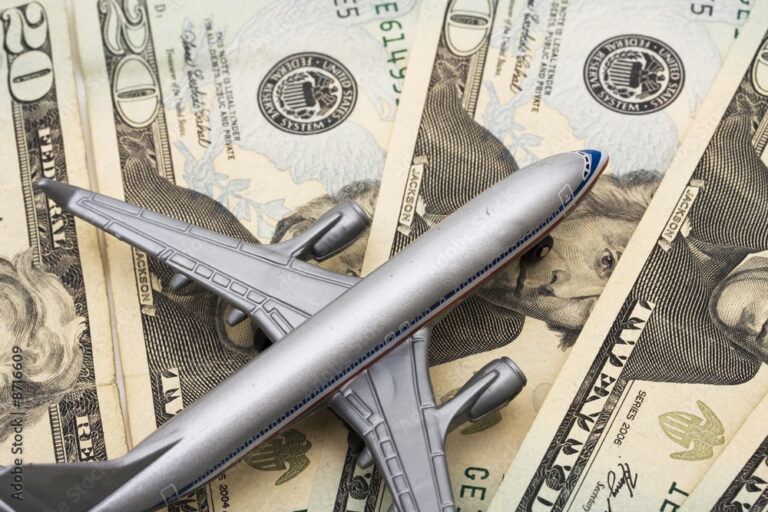Business aviation is much more complex than getting people from point A to point B. Unlike buying a car, where the business aircraft goes, why, who, and how often all make a big difference in the cost of doing business.
“Planning is important,” says Joanne Barbera, founding partner of Barbera & Watkins, an aviation law advisory service with expertise in the intricacies of regulatory affairs and tax matters affecting business and general aviation in the United States. “We help clients buy or lease aircraft and negotiate financing, management, and other agreements. We guide regulatory planning to make sure clients comply with FAA and DOT regulations. We also advise on aviation tax planning, which includes federal income tax and sales and use tax in the USA.”
As past chair of the National Business Aviation Association (NBAA) Tax Committee and current vice chair of the NBAA Regulatory Issues Advisory Group, Barbera is an expert on the ins and outs of aviation taxes in the USA. Her first rule of business is to stay in her lane.
“We are happy to do the things we do well every day, but once we cross into specialized FAA registry issues or international issues outside of our jurisdiction, we’re not going to try to figure it out ourselves,” says Barbera of the need for hyperacuity in the legal, regulatory, and tax matters surrounding business aviation. “We look to colleagues for external expertise. When dealing with a question about Florida, I reach out to experts in Florida to develop the best structure and planning for the client’s business aircraft investment and use.”
There is a lot to navigate. In the USA like many places business aircraft are depreciable. Owners are allowed annual income tax deductions to recover the cost of the asset. Understanding the aircraft’s deprecation schedule, whether straight or accelerated and whether it qualifies for bonus deprecation are among the issues Barbera talks about with clients every day.
Not every aircraft owner experiences tax benefits of ownership, however.
“The IRS tax codes involve many hurdles,” continues Barbera. “Owner at-risk issues, passive activity loss limitation issues, disallowance of deductions, the treatment of personal use of an employer-provided aircraft, all come into play.”
Some companies lease rather than purchase aircraft. Under an exclusive true lease, the lessor is getting the depreciation benefit, though they may share that with the lessee in rent pricing.
“It helps to know how the client will use the aircraft. Some companies are centralized, meaning essentially one user. Others are very entrepreneurial with many decentralized businesses using the aircraft independently, involving more complexity. Far-sighted tax planning must work with the client’s tax advisors, flight department, internal bookkeeping, scheduling and corporate governance,”she says.
Business aviation must also contend with Federal excise tax (FET) on air transportation.
“Companies providing transportation of passengers on the aircraft for compensation may trigger FET,” continues Barbera. Per the NBAA’s Federal Excise Tax Guide, the FET on air transportation of persons is 7.5% of the ‘amount paid’ for air transportation that begins and ends in the USA. “Before a company decides any of this, they should be talking to an aviation law and tax planner.”
Beyond taxation, buying an aircraft is an investment, often financed. Consequently, determining the best way to pay for it involves market trends, interest rates, and borrower credit ratings, compounding the complexity and stakes in decision-making.
“White Bridge Capital formed in response to trends in private banking, where regulatory constrictions, the increased cost of capital, and declining customer service sent customers in search of other options,” says Ford von Weise, head of aircraft advisory and finance at the recently formed real estate private investment and credit advisory firm. “Many left private banking to join multi-family offices, where a network of interests forms a full-service financial management firm.”
Joining a multi-family office enhances the benefits of wealth through services like investment management, tax and estate planning, philanthropic advice, and lifestyle management.
“Multi-family offices generate great returns, but many don’t fully understand the lending process. How can debt increase returns? What is the right structure of debt, and what is negotiable?” says von Weise.
“White Bridge Capital offers liability management and credit advisory services. From real estate to art to private aircraft and other high-value specialty assets, we advise on how to buy in each asset class, and what the right loan to optimize the return is.”
Von Weise has been a figure in aircraft finance for more than 30 years. He was the director of global aircraft finance at Citibank for 19 years and worked for Merrill Lynch and GMAC before that. He served as the president of the board of directors for the National Aircraft Finance Association from 2012 to 2018. He is also a pilot who has owned seven different aircraft.
“What sets White Bridge Capital apart is that rather than earning a fee and placing a loan, we manage the liability for the life of the loan,” continues von Weise. “Liability under management shifts the landscape of aircraft finance from private banking to capital advisory.”
He points out that business aircraft ownership versus leased or chartered services is often a matter of client preference, location, and overall client tax liability.
“Outside of North America, things are very different. We don’t see a lot of corporations buying aircraft internationally. About 70% of business aviation clients I work with involve North American interests. In Europe, there is much better connectivity and convenience for international travel by train.”
Among the many considerations aircraft buyers may not contemplate without specialized advice, where to register an aircraft is a valid concern.
“While most of the aircraft we help clients invest in are in the USA, increasingly clients are registering aircraft elsewhere. This affords them more anonymity when they travel,” says von Weise. “Places like the Isle of Man, Malta, Cayman Islands, and Bermuda have made their aircraft registries very user-friendly.”
Home or away, in business aviation the game is almost always a little international. Getting from point A to B faster, smarter, and with greater comfort and convenience add up to increased productivity and profit. For von Weise and his peers in capital, tax, and legal advisory for business aviation, you’re only as good as your network.
“What’s great about aviation is everyone knows everyone else,” shares von Weise. “Our firm represents clients from South America, Europe, and the USA. Each has very different buying and selling considerations. So, business aviation is often international business where the needs are very different.”
Having worked in customs and Value Added Tax (VAT) for over 30 years, Adrian Parcell-Jones is the spearhead of Martyn Fiddler Aviation’s tax consultancy advising on aircraft ownership taxation and customs.
“We advise on aviation-specific customs and VAT regulations governing items like importing and exporting and temporary admission for aircraft throughout the European Union,” begins Parcell-Jones from Martyn Fiddler’s Stansted offices. In addition to being on the NBBA Aviation Tax Committee, he is also a member of a Parliamentary working group on aviation tax in the UK. “Martyn Fiddler offers customs services such as import solutions and VAT free sales in customs warehouse, aviation specific customs and VAT advice. We also set up companies that own aircraft on behalf of our clients. It is standard practice to set up companies to retain high-value assets like aircraft to ring-fence liability risk. All our services are focused on how the owner plans to use the aircraft.”
Whereas in the USA, it is easy to imagine a business aircraft that remains within national borders throughout its life course, it’s hard to do the same for any aircraft registered in the European Union.
“Every aircraft that crosses a customs frontier to operate within the UK or the EU should make an initial customs declaration and pay the local VAT,” says Parcell-Jones. “In the EU, this ranges between 18 and 27%, 22% being the average. For commercial charter aircraft, VAT is rated at 0% meaning they don’t pay anything. Conversely, aircraft not based in the EU can come in under the Temporary Admission processes. Both options have conditions, so understanding all aspects of the planned business use is how we make the ownership of corporate aircraft customs and VAT compliant.”
In layman’s terms, VAT is a tax levied on the value added to a good or service at each stage of the item’s production and distribution. Unlike sales tax, which is assessed on the consumer at the item’s end use, VAT is a tax that is levied wherever value is added from buyer to seller at every transaction throughout the supply chain and at import. VAT raises roughly a fifth of total tax revenues worldwide. In June 2023, 175 of the 193 countries with United Nations membership employ a VAT style tax regime, including most recently the Gulf States, though the USA does not.
“A common international approach to VAT focuses on providing a level playing field for trade via international treaties,” continues Parcell-Jones. “If an aircraft is arriving from the USA, it needs to enter under a temporary admission application or be imported. So, it’s important to get good tax advice. VAT in the UK is 20% of the value of the aircraft. So, on a US$50 million aircraft that is a US$10 million concern. I’m paid to get it right, which means keeping our clients safe from losing millions of dollars on VAT.”
Like Barbera and von Weise, Parcell-Jones emphasizes the importance of good advice.
“In business, you’ve got to get advice from the right people,” he says. “Aviation tax advice must be tailored precisely to how the client will use the asset. Essentially, it should be bespoke.”





